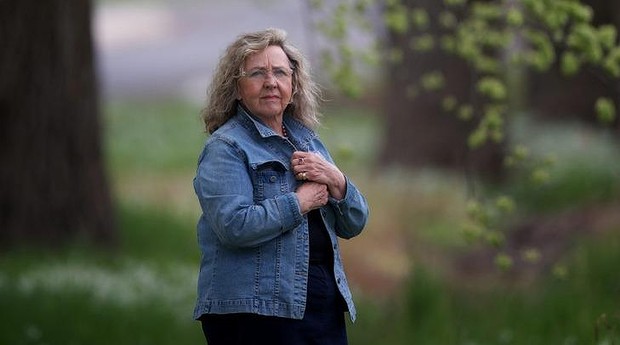Beth's Story: a Church Sex Abuse Case Study in "Secondary Victimisation"
By Chris Goddard
"I was a young schoolgirl with everything before me. I was a student doing well at Forbes High School, coming first in four subjects ... However, my life and future plans were stolen from me by the criminal actions of an Anglican priest ... Donald Shearman." This is how Beth Heinrich started her private submission to the Royal Commission into Institutional Responses to Child Sexual Abuse. Shearman was an assistant Anglican priest, and he and his wife were in charge of the hostel where Beth boarded. Beth's detailed submission about her rape and abuse provides an extraordinary insight into how perpetrators prepare their victims, and just how vulnerable children are. One day, after many months of sexual abuse, Beth was "labelled promiscuous" and expelled from the hostel. This is where Beth's story begins a new and extraordinary trajectory. Her experiences – and the many documents that she has kept – provide the most detailed case study of what is called "secondary victimisation". Shearman – and the church – kept Beth hostage to his abuse. Child rapists seek to corrupt the institutions that provide the opportunities for their crimes. Corrupting the host institution provides the cloak of concealment and confusion that denies the victim any chance of justice or recognition. Once corrupted, in order to protect themselves, institutions often aggressively minimise the crimes and blame the victims. Researchers in the US have called this the "second rape". Other terms include double or post-crime victimisation. "Secondary victimisation" is too soft a term for what happened to Beth. She was further abused by so many. She was subjected to emotional, psychological, institutional, even governmental abuse. There were so many who were so powerful and so determined to deny Beth justice. There were so many ways invented to deny that any abuse had ever occurred. Donald Shearman's promotions were public, each one a further insult: Rector of Coonabarabran, Archdeacon of Mildura, Bishop of Rockhampton and, in 1978, the OBE for "outstanding services" to the church. Beth's victimisation reached its public peak in 2002. Peter Hollingworth, then governor-general, himself a bishop and OBE recipient, declared on ABC TV's Australian Story that the relationship between Shearman and the teenage Beth was not sex abuse. "There was no suggestion of rape or anything like that, quite the contrary," he said. "My information is that it was rather the other way round." Slowly, however, Beth's courage and determination started to undermine the deceitful structures, unravel the lies, free the bonds. Shearman resigned his holy orders, was defrocked and forced to hand back his OBE. Hollingworth resigned as governor-general. Sadly, even with the best of intentions, it may never be possible to protect every child. Institutional responses to abuse can be changed, however, and thus dramatically reduce the damage done. Changes to the criminal and civil law are needed. The failure to report a crime against a child should itself be treated as a crime. Those in institutions who fail to report should be charged. The devastating effects of repeated re-abuse must be reflected in the damages paid to victims. The costs to the institution should multiply, just as the damage is multiplied by the institution's failures. Protection must also be provided for whistle-blowers. Members of any institution or organisation providing services for children must be encouraged to report concerns, without fear of persecution. Unfortunately, Australia has a long and troubled history of tokenistic legal reform in child protection. The confusion surrounding mandatory reporting laws is the most obvious example. Different laws in different states, and indifferent responses: to my knowledge, there have only ever been two prosecutions for failing to report. Finally, the language we use must reflect the seriousness of the crime. Shearman was defrocked for "maintaining a sexual relationship with Beth", not for repeated rape of a child. The language we use to support Beth Heinrich and others is important too. There has been extensive debate about whether they are victims or survivors. Rahila Gupta, the writer and journalist, has argued that the word "victim" should not be entirely replaced by "survivor" – "'survivor' celebrates the individual, but 'victim' recognises the enormity of the system we are up against, and its brutalising potential". After all these years, the royal commission has given Beth the opportunity to tell the brutal reality of her story, uncensored. It has also given one bishop the opportunity to offer public support. Journalist Amanda Gearing, who told Beth's story in a feature article in The Age last Thursday, described archbishops and bishops "passing by on the other side of the road" when Beth appealed for help. This time, someone crossed the road to help. Geelong-based Bishop Peter Danaher's walking into the commission with the victim Beth Heinrich was a major step in ensuring she is no longer a hostage, and becomes a survivor. It could also be a first step towards better child protection and a less abusive church. Adjunct Professor Chris Goddard, of the Monash Injury Research Institute, helped Beth Heinrich on her submission to the royal commission.
|
.
Any original material on these pages is copyright © BishopAccountability.org 2004. Reproduce freely with attribution.
